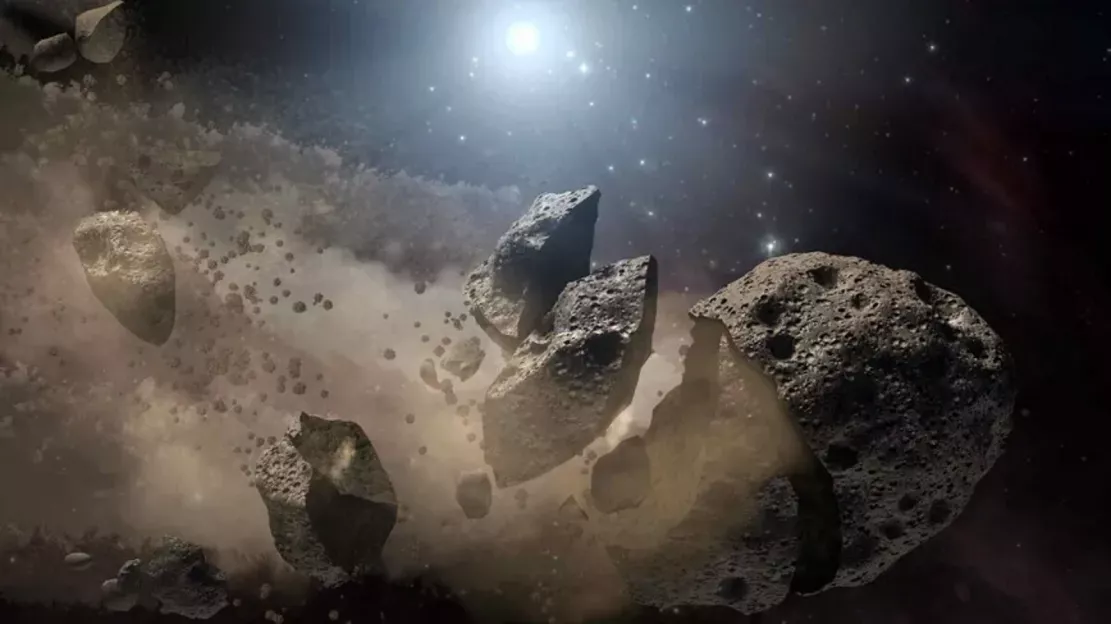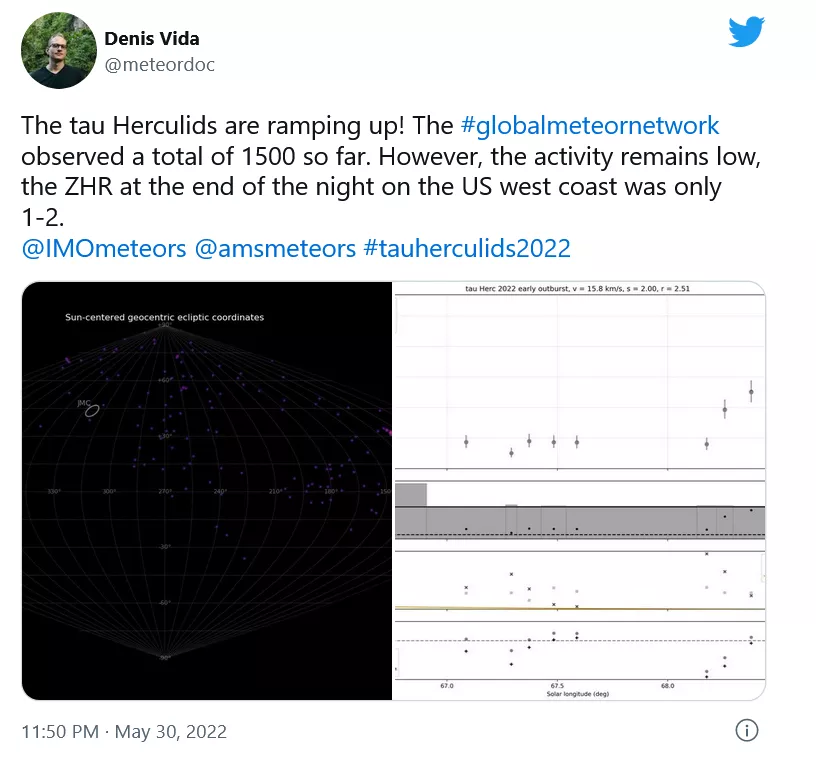Astronomers said that the debris of a comet may trigger a series of meteors and fireballs on Monday night and early Tuesday morning local time From the evening of May 30 to the morning of May 31, it is possible to see the birth of a new meteor shower called tau herculids. And there is a small chance that it will erupt into a dramatic meteor storm.

But it is also possible that most people will see very little action. Like the meteor event predicted on May 15, it has never really been achieved. To be sure, our planet is about to pass through the orbit of a comet named 73p/schwassmann-wachmann (also known as SW3), which has been in the process of splitting since at least 1995. At that time, astronomers discovered that the comet's nucleus had split into four small pieces because it had unexpectedly brightened by several orders of magnitude.
Over the past quarter century, the comet has continued to crack further and become dozens of small pieces and countless tiny pieces of debris, dust and debris.
Although the loose debris of the comet itself will not approach the earth when the Earth passes through the orbit of the comet around the sun next week, it is expected that a large number of debris after its disintegration will collide with our planet. Many of these individual fragments will burn up when they hit our upper atmosphere. Smaller particles will produce weak meteors, and larger particles may explode into slow-moving fireballs to illuminate the whole night for several seconds.
This event is a bit like watching the sky, like buying lottery tickets. Your chances of winning / seeing amazing things are not very high, but if we do happen to win the grand prize, we will be able to see hundreds of meteors flying in less than an hour. That will be a thing worth remembering all our lives. Of course, we may also see something more typical in the form of meteor shower, but it is just a historical storm without winning the grand prize.
"There is great uncertainty here," astronomer Ye Quanzhi said on YouTube. "We know something is going to happen, but we don't know the result... Will it be a big show or close to nothing?"
According to the American meteor Association, the ideal time to go outside to find tau herculids is from 9:45pt to 10:17pt on Monday night.

Robert Lunsford wrote for AMS: "the southwestern United States and Mexico are favorable locations because the radiation points, that is, the sky area generated by these meteors, will be located at the highest point in the dark sky. The outbreak can also be seen from southeast Canada and the rest of the United States (East), but at a lower height."